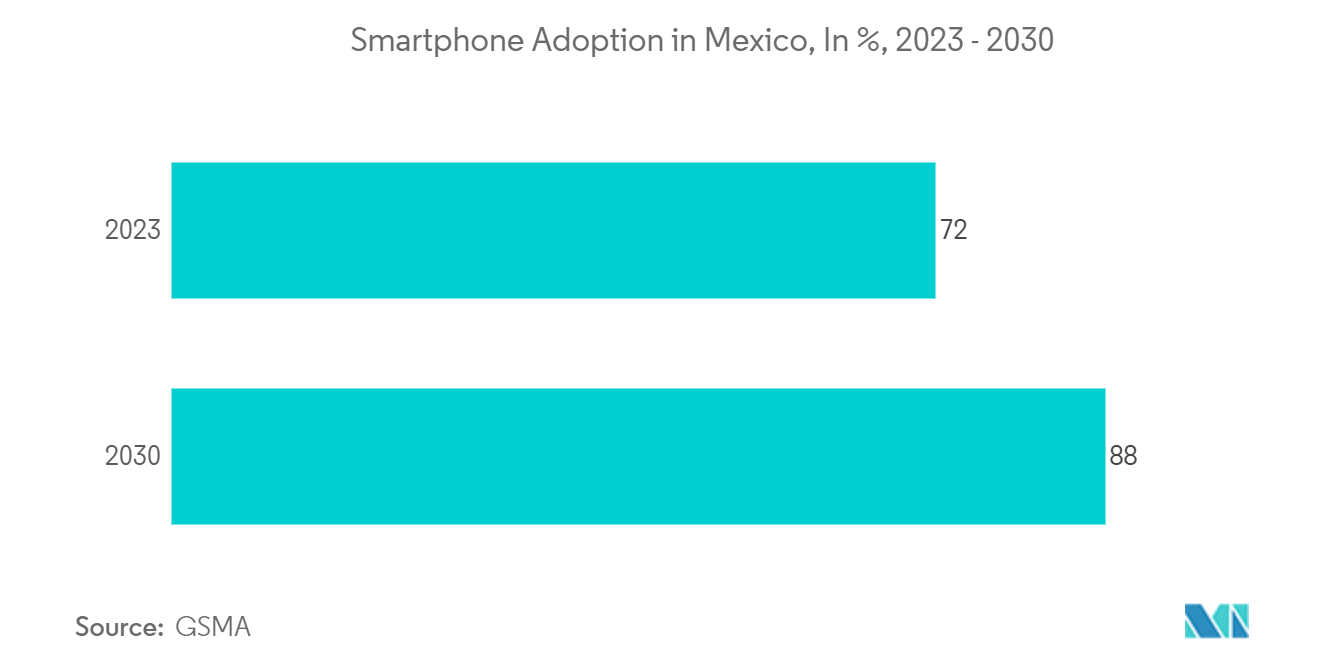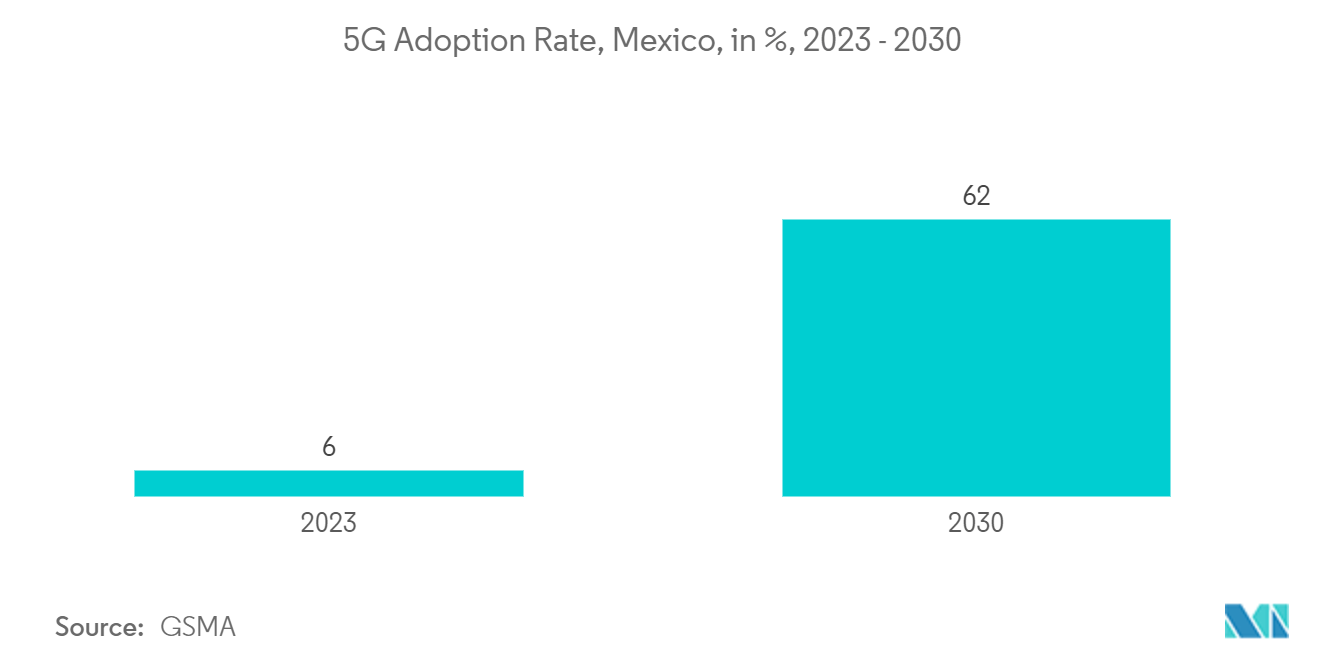Market Trends of Mexico E-commerce Industry
Adoption of Online Mode of Purchasing
- In Mexico, online marketplaces such as Mercado Libre and Amazon are popular. With over 50 million monthly views, Mercado Libre and Amazon were the most popular e-commerce sites last year. Amazon recently announced a USD 100 million investment to establish two new distribution centers and 12 delivery stations in Mexico. Amazon is up against regional powerhouses like MercadoLibre, whose online sales increased considerably last year.
- Both businesses are working quickly to develop infrastructure and logistics in the country. Amazon now has seven fulfillment centers in Mexico. The company also announced the opening of four more fulfillment centers in the country, one of which will be in Tijuana, serving both local consumers and those in neighboring Baja California regions.
- GSMA projects a significant rise in smartphone adoption in Mexico, from 72% in 2023 to a forecasted 88% by 2030. In 2023, the subscriber penetration rate stood at 78%, with an expected increase to 85% by 2030. These figures underscore a robust trend toward online purchasing in Mexico.
- The Mexican Association of Online Sales reports that 90% of customers are satisfied with online purchases. They are, therefore, more likely to assign higher scores. Online shopping is more popular than offline buying since it is more convenient. In the previous 12 months, 80% of Internet users made online purchases. Eight of ten customers claim that the website's design influences their product choice.
- International companies seek to increase their global footprint and stake a claim in expanding the e-commerce industry, increasingly targeting Mexico. Alibaba, the Chinese e-commerce powerhouse, is one such example. It is investing in the creation of 'digital communities' in Mexico's 32 states to increase online spending.

Growing B2C E-commerce Segment
- The medium to long-term growth story of Mexico's B2C e-commerce sector seems promising. More and more Mexican consumers anticipate shopping online in the next three to four years. As a result, e-commerce transactions as a percentage of overall retail sales are expected to increase even further in the nation in the short to medium term.
- The increasing penetration of 5G in Mexico is poised to notably propel the growth of the B2C e-commerce sector. For example, GSMA projects that 5G adoption in Mexico will surge from 6% in 2023 to an impressive 62% by 2030. This data underscores how the ascent of advanced technologies is fueling the expansion of the B2C e-commerce landscape.
- E-commerce has added to in-store purchasing rather than taking its place for food and beverage sales in Mexico. According to the Mexico Online Sales Association, more than a third of online food and beverage consumers in Mexico purchase groceries online as frequently as once a week. Nearly 25% made similar purchases every month. This indicates a significant demand from the food and beverage sector.
- Cosmetics and personal care products are significant consumer goods sub-sectors in Mexico. Mexico remains the second-largest market for beauty products in Latin America and is ranked in the top 10 global markets for cosmetics and personal care items. In addition to American goods being sold in Mexico, US exporters of beauty and personal care products are expected to face intense competition from European (French, Italian, German, and British) companies and a rising number of Asian firms. The popularity of Korean beauty products has spread to Mexico as well, and the previous year saw the highest increase in imports from Korea.
- Significant prospects for growth are in the developing niche markets, where there is less competition from large multinational corporations that dominate the mainstream market and invest heavily in marketing. Since Mexico's beauty industry is still developing, there are opportunities for suppliers to pioneer in markets that are still emerging in Mexico but are more established in the United States. These factors are expected to provide opportunities for the B2C segments during the forecast period.


